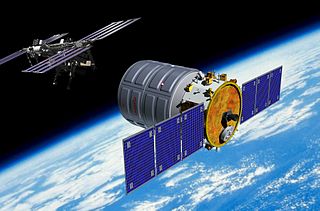NASA and Commercial Spaceflight: September 2013 Update
Moon enthusiasts should have an occasion to celebrate in September. As of this writing, NASA has scheduled the Lunar Atmosphere and Dust Environment Explorer (LADEE) scheduled to launch on Friday, Sept. 6 at 10:27 p.m. CDT. LADEE is a robotic mission that will orbit the moon to gather detailed information about the lunar atmosphere, conditions near the Moon’s surface, and environmental influences on lunar dust. This will be first rocket launch of a NASA science mission from the NASA-Wallops Island Flight Facility in Virginia. Also, LADEE (pronounced “laddie”) will be the first payload launched aboard the five-stage Minotaur V rocket, developed by Orbital Sciences.
Commercial Spaceflight enthusiasts should also have an occasion to celebrate this month. As of this writing, Orbital Sciences has also scheduled the test launch of its Antares rocket and the new Cygnus capsule, also from NASA-Wallops, but this time to the International Space Station (ISS) on Tuesday, Sept. 17 at 10:16 a.m. CDT. This will be Orbital’s second test launch of Antares, the first launch of Cygnus, and the first time that Cygnus will berth with (be attached to) ISS. For this test launch, Cygnus will deliver up to 4,400 lbs. of payload (food, clothing, experiments, and equipment) to ISS. Upon the successful completion of this test launch, Orbital will be the second Commercial Spaceflight company to have launched to ISS. Then in 2014, Orbital will begin its NASA Commercial Resupply Services (CRS) contract for eight launches, scheduled to deliver a total of 44,000 lbs. of payload to ISS. The first successful Commercial Spaceflight company, SpaceX, has already begun launches under its NASA CRS contract, and SpaceX has its third (SpX-3) of twelve contracted launches scheduled for Dec. 9.
Additionally, advancements continue with the development of the NASA Space Launch System (SLS), the rockets that will take astronauts beyond the Moon, to Near Earth Asteroids (NEAs), and to Mars. In August, NASA created a rocket engine injector using “selective laser melting” (a type of 3-D printing). That rocket engine injector will channel and mix propellants during a rocket launch. This 3-D printed injector has only two parts, whereas 115 parts have been required to create such an injector by traditional means. After fabrication, the injector was installed in a rocket engine, then test fired at 6,000 degrees F at 1,400 psia pressure, and it performed flawlessly. This 3-D printing technology has the potential for significant time and cost savings required for the development of the complex rocket engine parts designed for the heavy-lift NASA SLS rockets.
Wishing much continued success to NASA and Commercial Spaceflight companies – especially Orbital Sciences – in September 2013 and beyond. If these or any other rocket launches are not being covered by the cable news stations, try NASA-TV and/or http://www.nasa.gov/.
Who says that NASA hasn’t done anything since they retired the Space Shuttles?
Ken Ruffin is the chapter president of the National Space Society (NSS) of North Texas, which supports Science, Technology, Engineering, and Math (STEM) education, and space science and space development, throughout the Dallas-Ft. Worth (DFW) metro area and beyond. Additionally, Ken has been a Trekkie since 1974.
For more information in the Dallas-Ft. Worth metro area, go to http://www.nssofnt.org/, and consider attending a NSSNT chapter meeting!



















 Full Details
Full Details





No comments yet.
Sorry, the comment form is closed at this time.